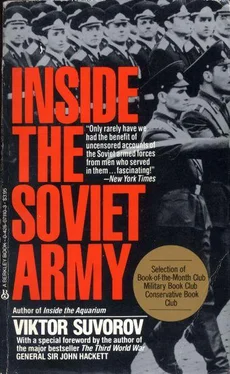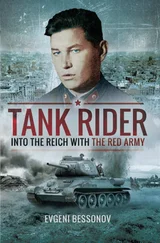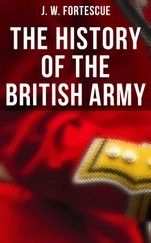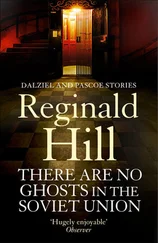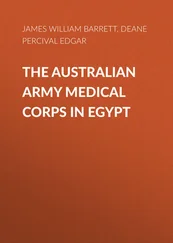The Soviet commanders believe that this massive air activity can be carried out without heavy losses, since the enemy's radars will have been destroyed, many of his computer systems and lines of communication will have been disrupted and his aircrews and anti-aircraft forces will have been demoralised.
While these massive air operations are taking place all staff personnel will be working at top speed on evaluation of the information which is coming in about the results of the initial nuclear strike. Meanwhile, all the rocket launchers which took part in the initial nuclear strike will be reloading. At the same time, too, the rocket battalions of the divisions and the rocket brigades of the Armies and Fronts, which did not take part in the initial strike because they were too far behind the front line, will move up to the forward edge of the battle area at the maximum possible speed.
All aircraft will then return to their bases and the third stage will begin immediately.
The third stage , like the first, will last only half an hour. Taking part in it will be even more rocket launchers than those involved in the first stage, since many will have moved up from the rear areas. The thinking behind this plan is simple: in battle the enemy's prime concern will be to hunt out and destroy all Soviet rocket launchers; each of these should therefore inflict the maximum possible damage on the enemy before this happens. The aim is to destroy all those targets which survived the first and second stages, and to put the maximum possible number of the enemy's troops and equipment, especially his nuclear weapons, out of action.
The fourth stage lasts between 10 and 20 days. It can be broken down into offensive operations by individual Fronts. Each Front concentrates all its efforts on ensuring success for its Tank Army. To achieve this the All-Arms Army attacks the enemy's defences and the Front Commander directs the Tank Army to the point at which a breakthrough has been achieved. At the same time, the entire resources of the Front's artillery division are used to clear a path for the Tank Army. The rocket brigades lay down a nuclear carpet ahead of the Tank Army, and the Air Army covers its breakthrough operation. The Front's anti-tank brigades cover the Tank Army's flanks, the air-borne assault brigade seizes bridges and crossing points for its use, and the diversionary brigade, operating ahead of and on the flanks of the Tank Army, does everything possible to provide it with favourable operating conditions.
The Tank Army is brought up to a breach in the enemy defences only when a real breakthrough has been achieved and once the Front's forces have room for manoeuvre. The Tank Army pushes forward at maximum possible speed to the greatest depth it can reach. It avoids prolonged engagements, it keeps clear of pockets of resistance and it often becomes separated by considerable distances from the other components of the Front. Its task, its aim, is to deliver a blow like that from a sword or an axe: the deeper it cuts, the better.
An All-Arms Army advances more slowly than a Tank Army, destroying all the pockets of resistance in its path and any groups of enemy troops which have been surrounded, clearing up the area as it moves forward.
A Tank Army is like a rushing flood, tearing its way through a gap in a dyke, smashing and destroying everything in its path. By contrast an All-Arms Army is a quiet, stagnant sheet of water, flooding a whole area, drowning enemy islands and slowly undermining buildings and other structures until they collapse.
During the first few hours or days of a war, one or all of the Fronts may suffer enormous losses. But it should not be assumed that the C-in-C of a Strategic Direction will use his second echelon Front to strengthen or take the place of the Front which has suffered most. The second echelon Front is brought into action at the point where the greatest success has been achieved, where the dyke has really been breached or where at least a very dangerous crack can be seen developing.
The fifth stage lasts 7–8 days. It may begin at any time during the fourth stage. As soon as the C-in-C is sure that one of his Fronts has really broken through, he moves up his second echelon Front and, if this manages to push through the opening, he brings his striking force, his Group of Tank Armies, into action. This operation by the Group against the enemy's rear defences represents the fifth stage of a strategic offensive.
This Group of Tank Armies consists of two Tank Armies. However, by this time the Tank Armies of the Fronts may already be in action against the enemy's rear defences. These Tank Armies may be taken away from the Front Commanders, at the decision of the C-in-C, and incorporated in the Group of Tank Armies. Towards the end of the action there may be five or even six Tank Armies in the Group, bringing its establishment up to as much as 10,000 tanks. If during a breakthrough half or even two thirds of these are lost, the Group still will be of impressive strength.
However, the Soviet General Staff hopes that losses will not be as large as this. Our pack of cards effect should manifest itself. Moreover, the operations of the Group of Tank Armies will be supported by all the resources available to the C-in-C of the Strategic Direction. All his rocket and air forces will be attacking the enemy with nuclear weapons, his airborne divisions will be dropped to help the Group to advance. Lastly, the whole Baltic Fleet will be supporting the Group. If the Group manages to advance, the whole of the forces available to the State, up to and including the Supreme Commander himself, can be massed to support it.
3
The strategic offensive has one alternative form. This is sometimes known as a `Friday evening' offensive. It differs from the normal version only in dispensing with the first three stages described above. The operation therefore begins at the fourth stage-with a surprise attack by a group of Fronts against one or more countries.
In practice, what happened in Czechoslovakia was an operation by a group of Fronts, carried out swiftly and without warning. Significantly this operation caught the Czechs off guard-profiting by the Friday evening relaxation of the State apparatus after a working week. Because of the small size of Czechoslovakia and the evident disinclination of the Czech army to defend its country, the C-in-C did not bring his Group of Tank Armies forward from Byelorussia and the Front commanders did not push their Tank Armies into Czechoslovakia. Only a very small number of tanks took part in the operation-some 9,000 in all, drawn from the tank battalions of the regiments involved, the tank regiments of the divisions and the tank divisions of the Armies.
The success of the Czech operation produced a new optimism in various other countries in Europe, which realised that they could hope to be similarly liberated in the course of a few hours.
The terrible epidemic of pacification which subsequently swept through Western Europe aroused new hopes of success through a bloodless revolution in the hearts of the Soviet General Staff.
1
In the winter of 1940, the Red Army broke through the `Mannerheim Line'. No one knows what price it paid for this victory, but, time and again, demographers have come up with the same figure-a total of 1,500,000 human lives. Whether this is accurate or not, the losses were so staggering, even by Soviet standards, that the advance was halted the very moment Finnish resistance was broken.
The following summer Soviet tanks were rumbling through the streets of three sovereign states-Estonia, Lithuania and Latvia. Since then, Soviet tanks have visited Warsaw, Berlin, Prague, Vienna, Bucharest, Budapest, Sofia, Belgrade, Pyongyang and even Peking. But they never dared to enter Helsinki.
Читать дальше
